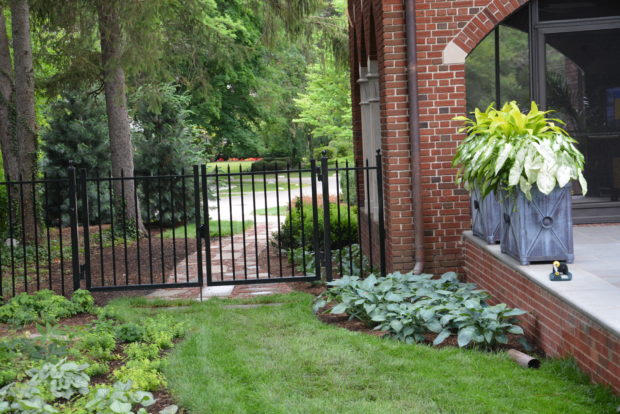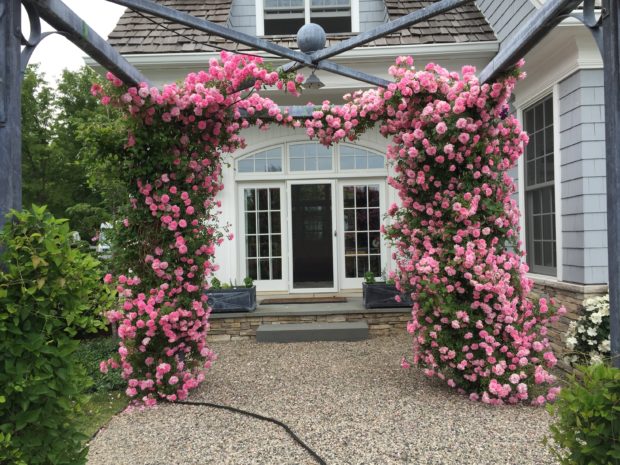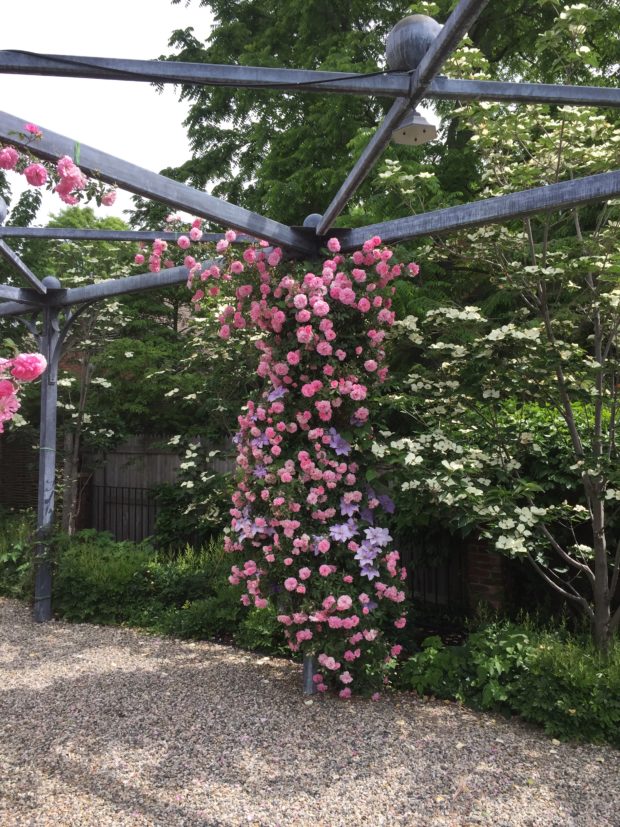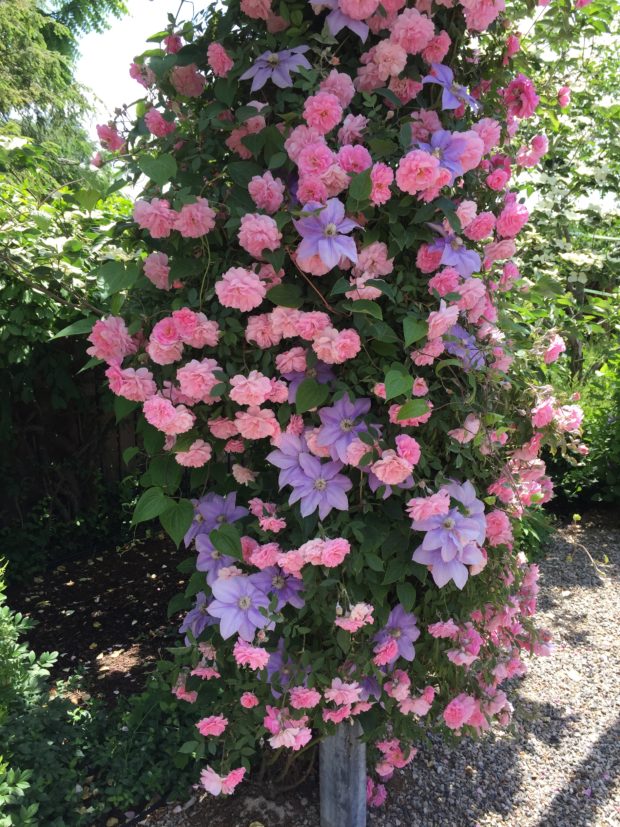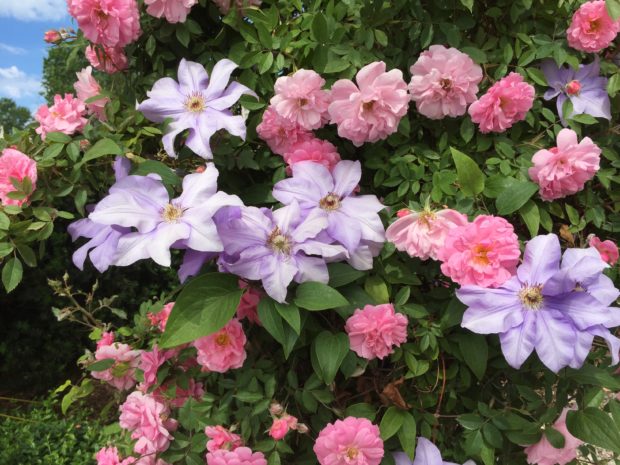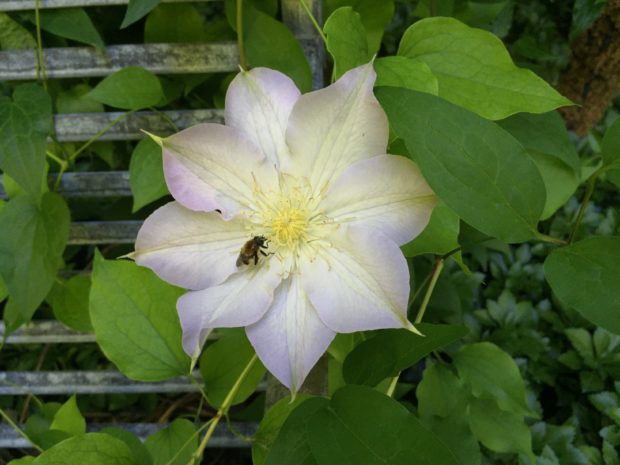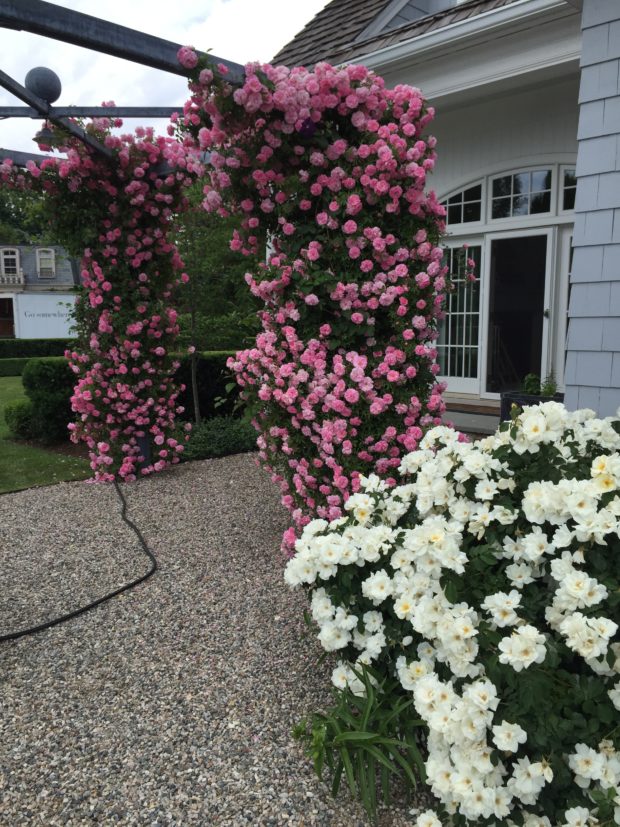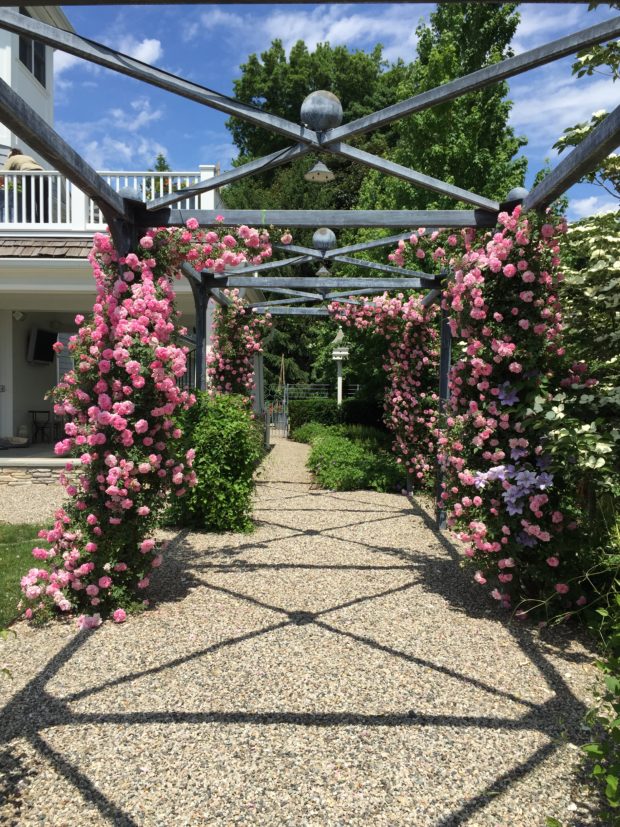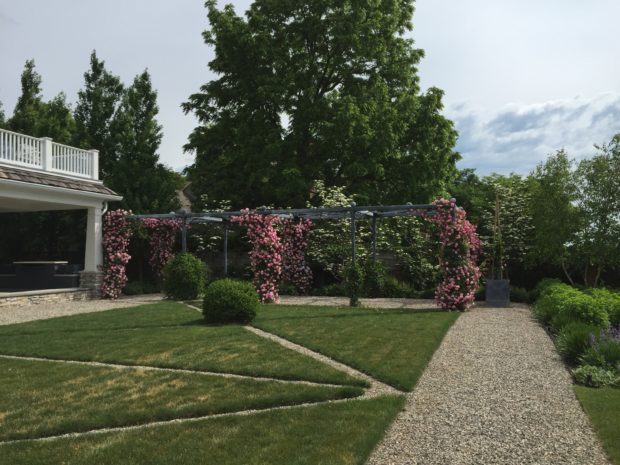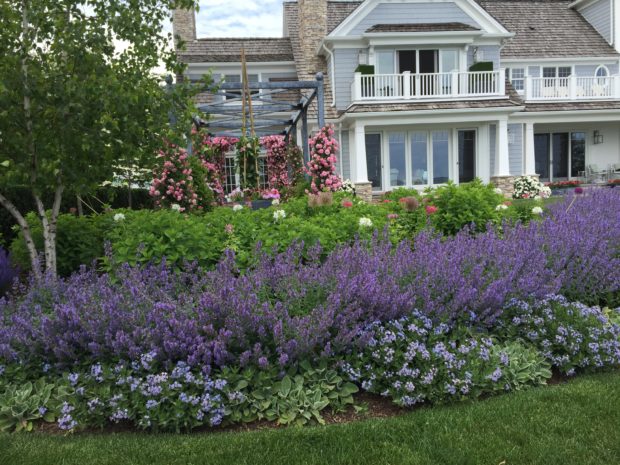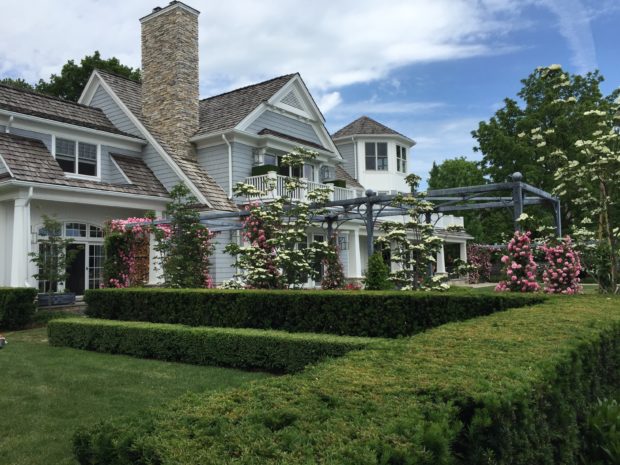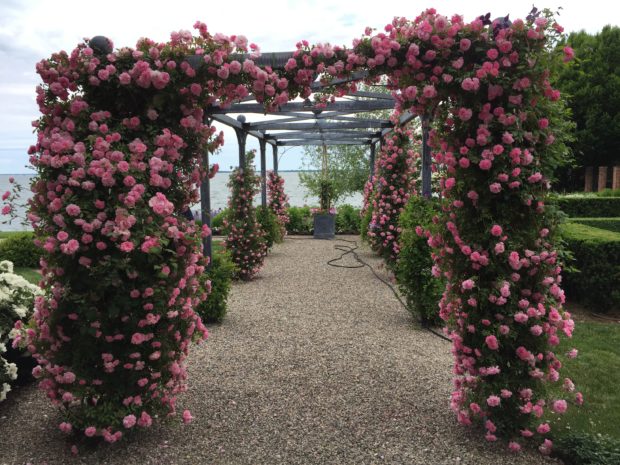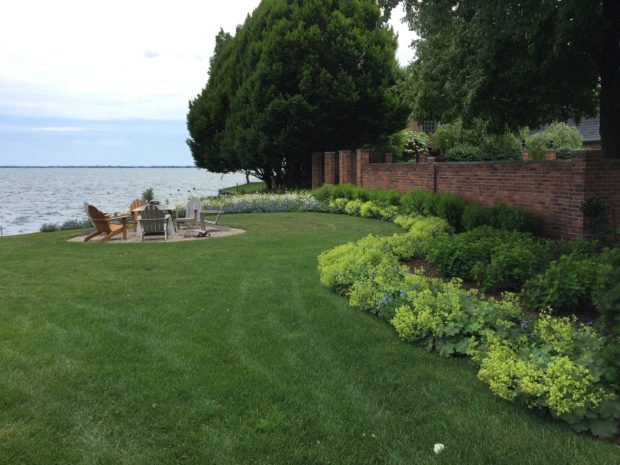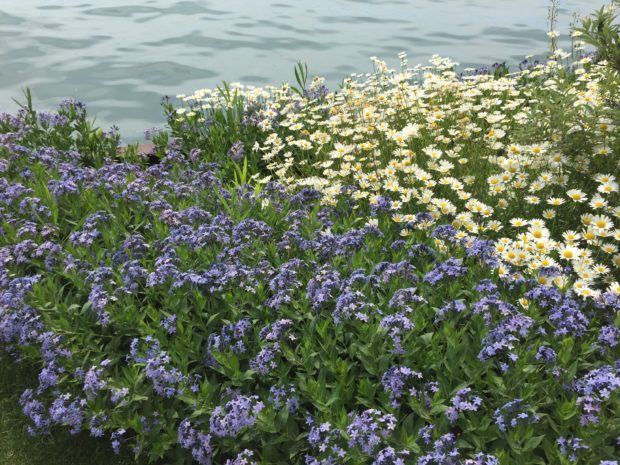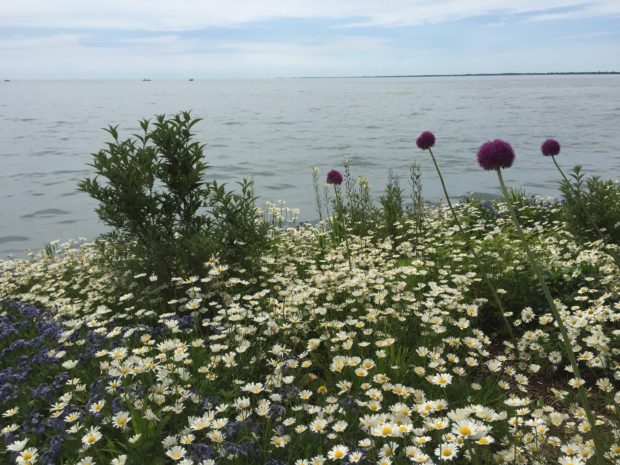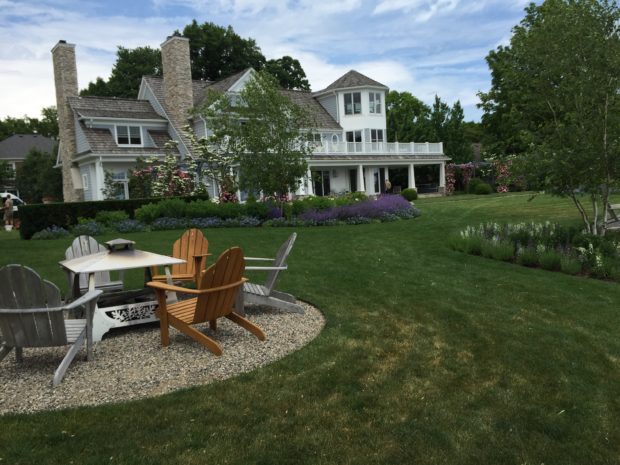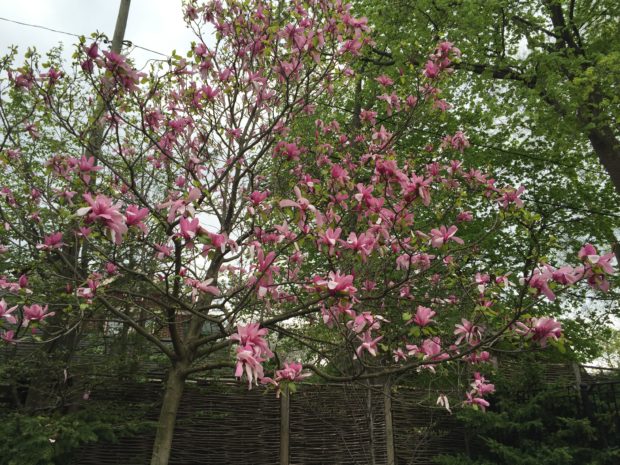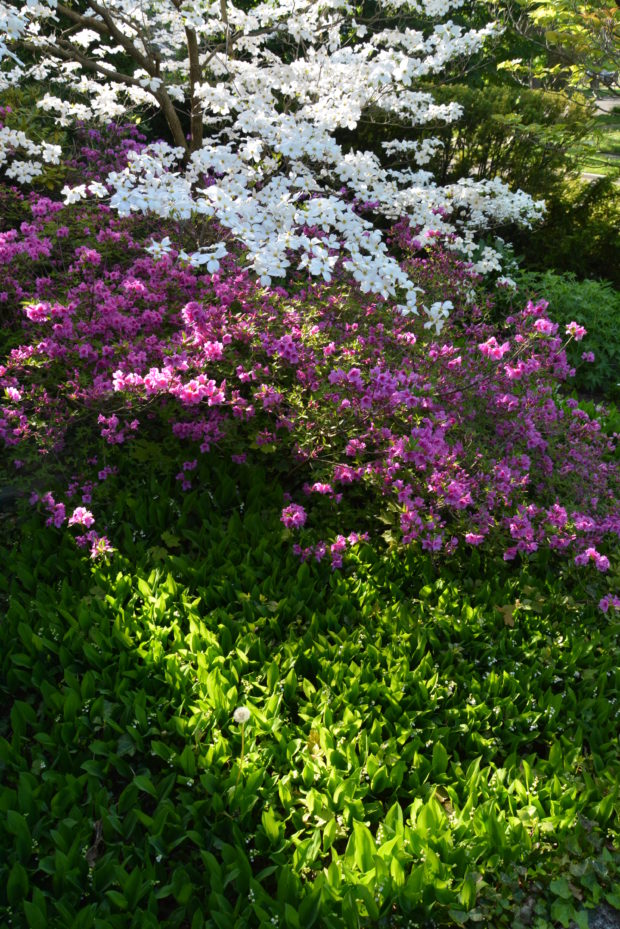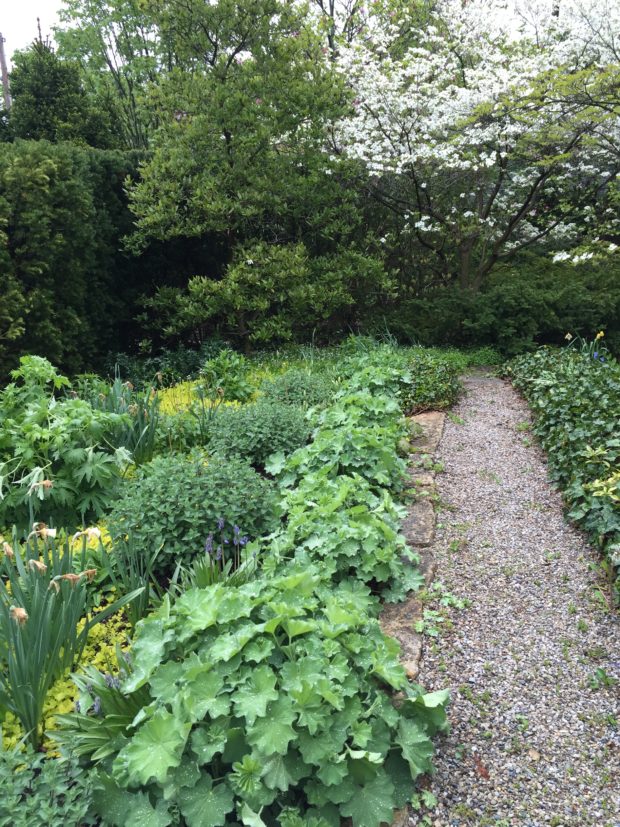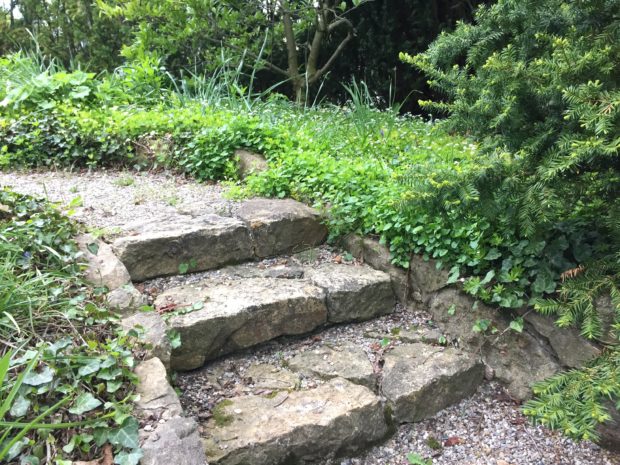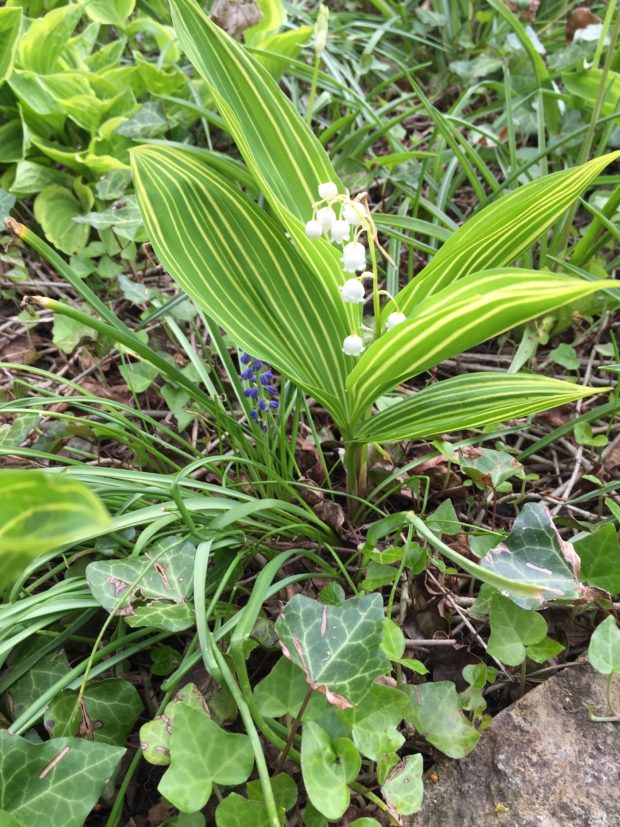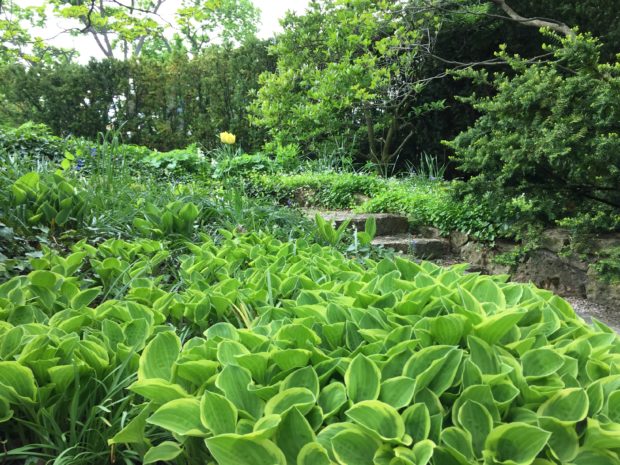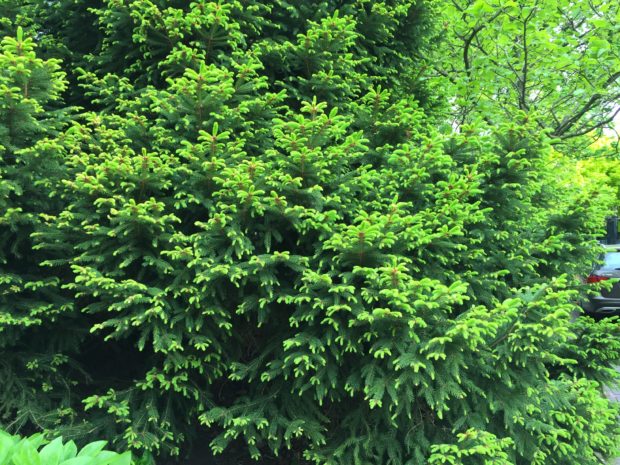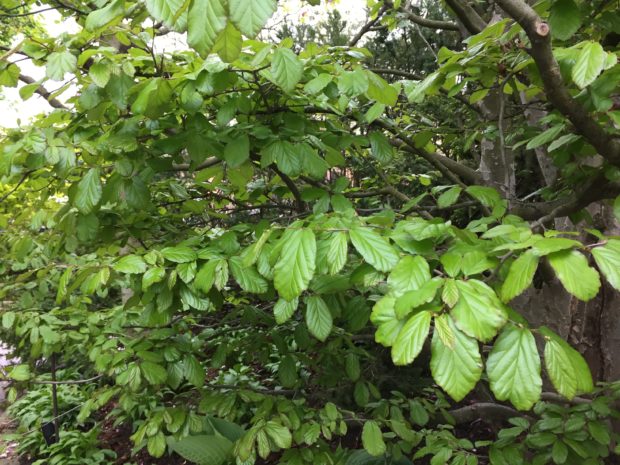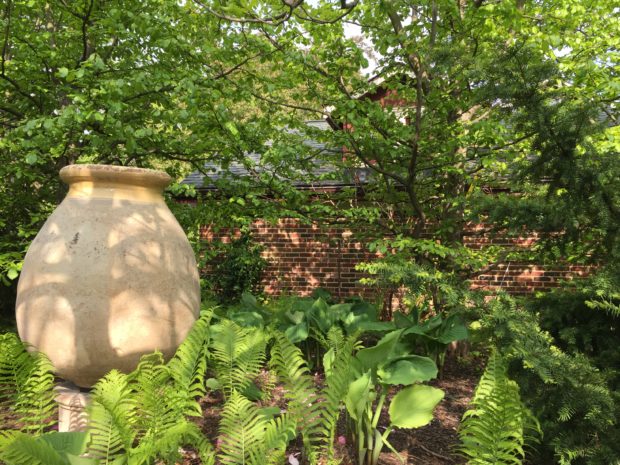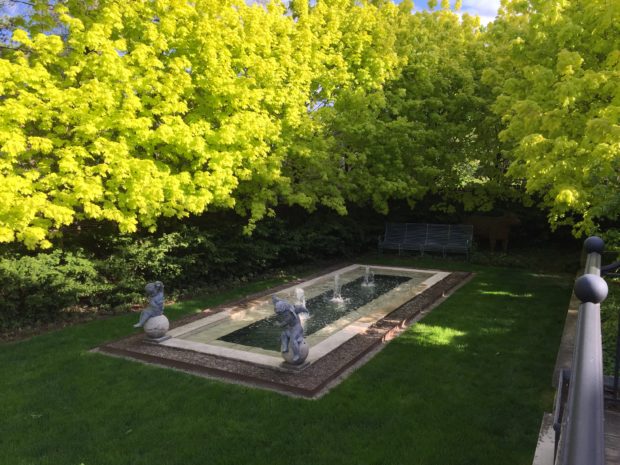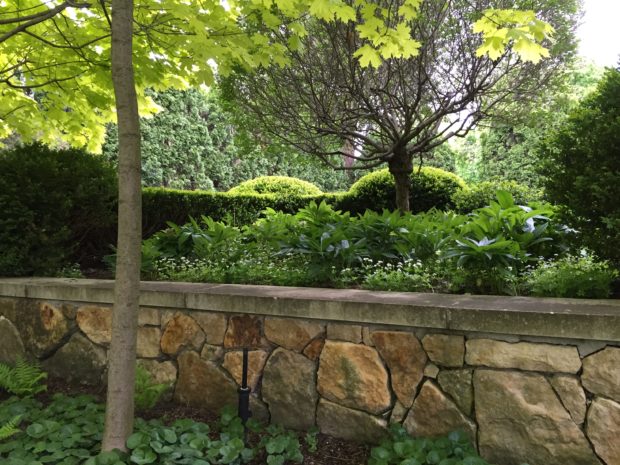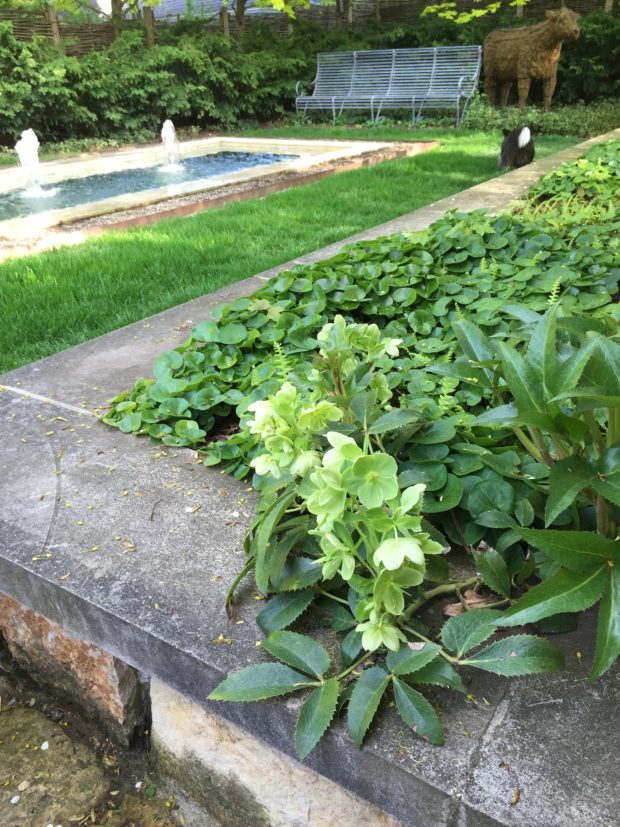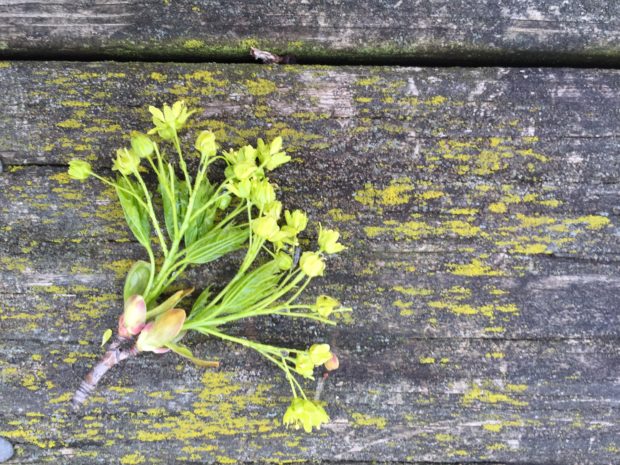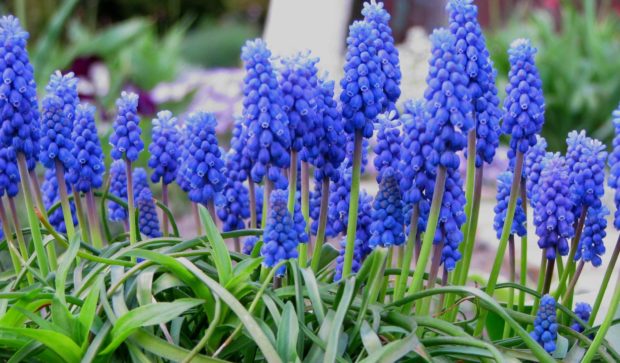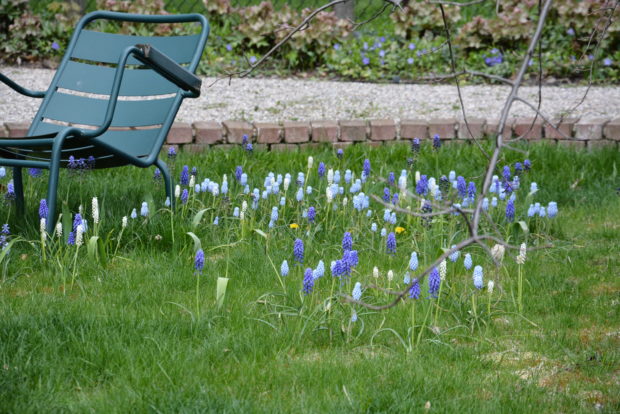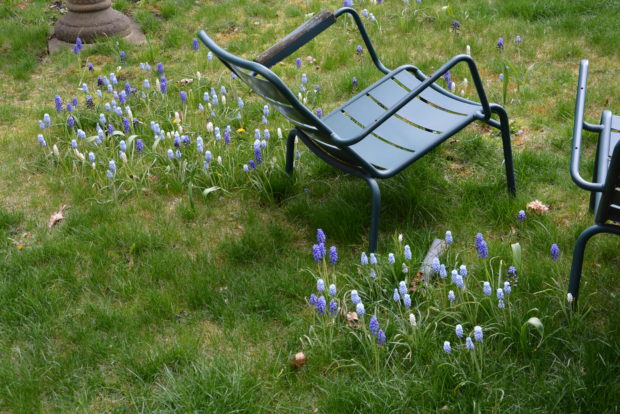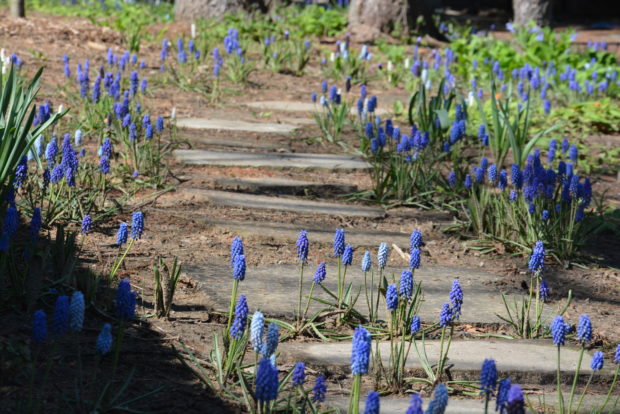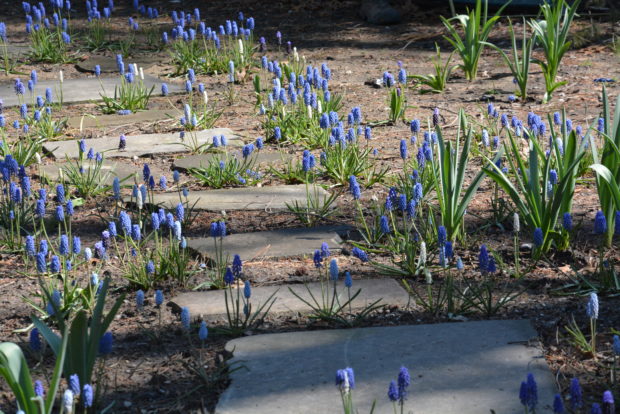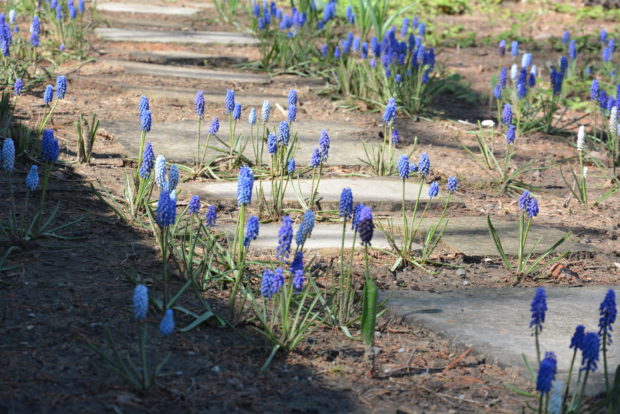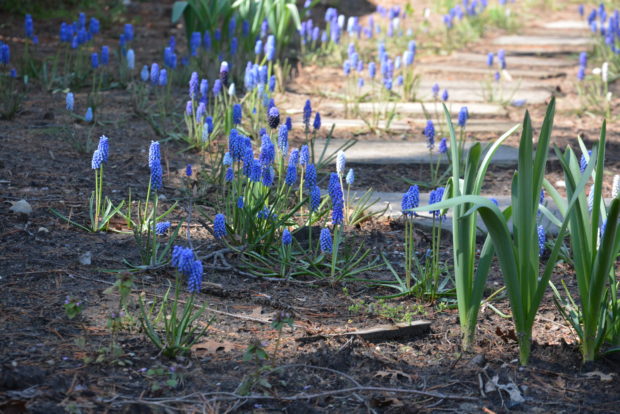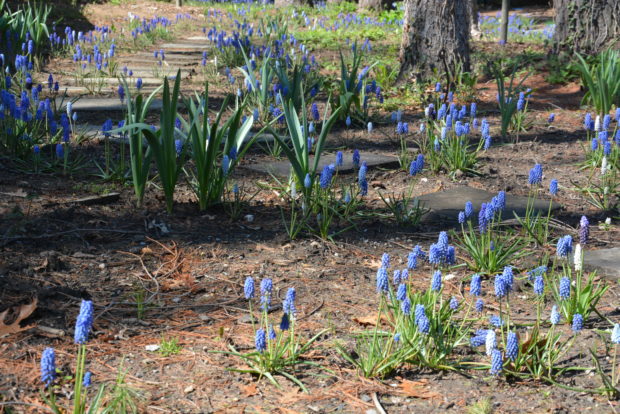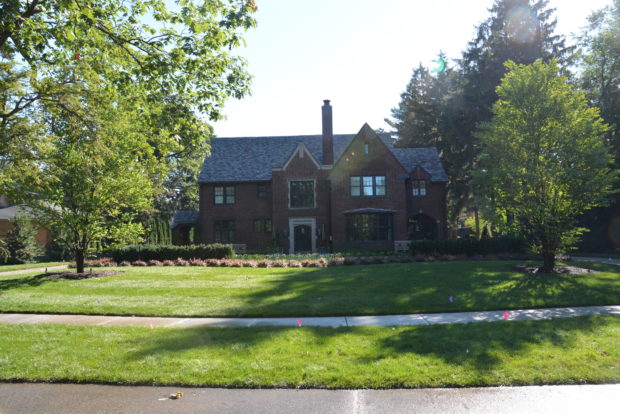
Our garden cruise July 17 raised $14,470.00 for the Greening of Detroit. Nine years of tours means we have raised $107,500.00 in support of their mission; I could not be more pleased about that. One of the landscapes and gardens on tour this year is a project we have been working on for several years. It was finished just days before this year’s tour. My clients support and identify with The Greening-who has had their eye on the reforestation of Detroit, sponsorship of urban farms, and education regarding the environment since the mid eighties. I should preface my remarks about their landscape design with a few more words about my clients. They purchased this house built in the 1920’s with their eyes wide open about what would be required to restore the house and the grounds. It has taken some time, but they stuck with it start to finish. I admire this about them. They are young people, with loads of energy, and a commitment to the city of Detroit. Their neighborhood, known as Palmer Woods, is on the north side of the city. A raft of old homes built in the early part of the century are now owned, prized, and looked after by a diverse group of people who love the old homes and graciously sized properties. They are a group of people whom I greatly respect.
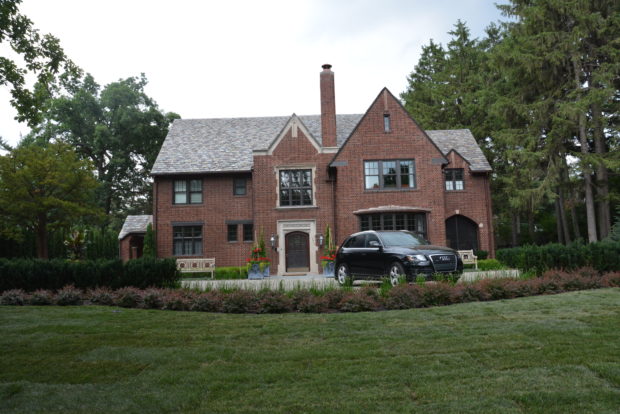 I did post about the installation of their driveway some time ago. Should you be interested in that earlier post, type A New Gravel Driveway into the search line. It was difficult to convince them to install a drive court in front of the house. They were concerned it would take up too much room. That it would be the beginning and the end of the front yard landscape. I was not concerned about this, but explaining to a landscape client what drives your design is part of the process. It is a long way to walk from the street to the front door. The driveway to the the rear is narrow, and is only useful as a way to get to the garage. My clients have lots of friends, and entertain regularly. The front yard was large enough to take a house side parking area. I know they like it now, as they and their guests are using it. The landscape from the street side does a great job of screening that drive court from the road, without obstructing the view to their beautiful home. The shape of the bed mimics the shape of the parking area, which features a long shallow curve in the middle. The curve is planted with dwarf red barberry on the street side, and allium “Millenium” on the inside. This is my first time ever specifying dwarf red barberry. The color perfectly responds to the color of the brick on the house. At a maximum height of 24″, they endow the view of the front of the house. That barberry atropurpurea nana traverses the front yard from the north drive to the south drive. The lawn area on the street side is just that-lots of lawn, punctuated by a pair of katsura trees.
I did post about the installation of their driveway some time ago. Should you be interested in that earlier post, type A New Gravel Driveway into the search line. It was difficult to convince them to install a drive court in front of the house. They were concerned it would take up too much room. That it would be the beginning and the end of the front yard landscape. I was not concerned about this, but explaining to a landscape client what drives your design is part of the process. It is a long way to walk from the street to the front door. The driveway to the the rear is narrow, and is only useful as a way to get to the garage. My clients have lots of friends, and entertain regularly. The front yard was large enough to take a house side parking area. I know they like it now, as they and their guests are using it. The landscape from the street side does a great job of screening that drive court from the road, without obstructing the view to their beautiful home. The shape of the bed mimics the shape of the parking area, which features a long shallow curve in the middle. The curve is planted with dwarf red barberry on the street side, and allium “Millenium” on the inside. This is my first time ever specifying dwarf red barberry. The color perfectly responds to the color of the brick on the house. At a maximum height of 24″, they endow the view of the front of the house. That barberry atropurpurea nana traverses the front yard from the north drive to the south drive. The lawn area on the street side is just that-lots of lawn, punctuated by a pair of katsura trees.
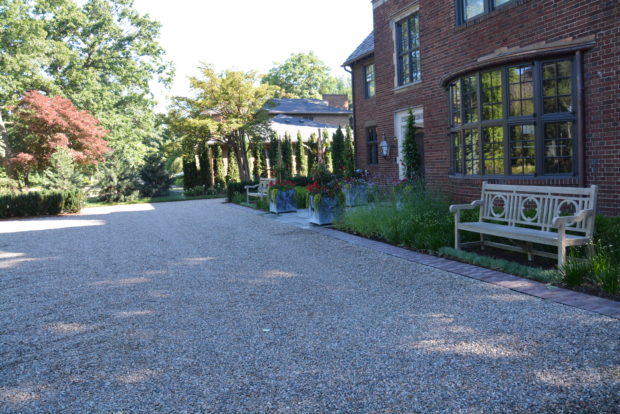 The interior of the drive court reveals what the street view conceals. There is ample space for parking to the left. To the right, a driveway that makes it possible to to drop off guests or packages at the front door, or continue on to the right, and through the port cochere, to the garage.
The interior of the drive court reveals what the street view conceals. There is ample space for parking to the left. To the right, a driveway that makes it possible to to drop off guests or packages at the front door, or continue on to the right, and through the port cochere, to the garage.
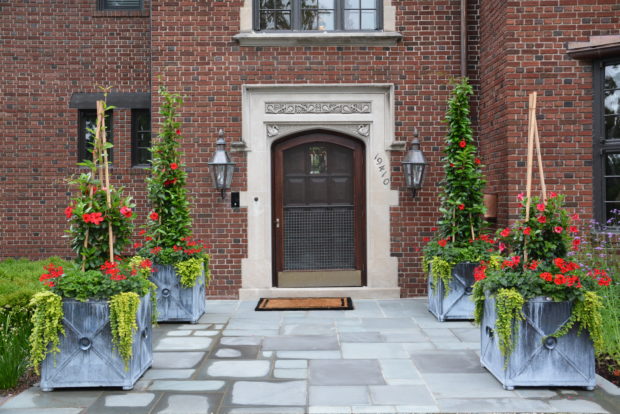 The front facade of the house is anything but symmetrical. The oversized front walk centers the view on the front door. At the out skirts of that walk, a quartet of Jackie boxes made by the Branch Studio further emphasize the entrance. The treatment of the front door organizes the space. The red and lime color scheme-a request from my clients.
The front facade of the house is anything but symmetrical. The oversized front walk centers the view on the front door. At the out skirts of that walk, a quartet of Jackie boxes made by the Branch Studio further emphasize the entrance. The treatment of the front door organizes the space. The red and lime color scheme-a request from my clients.
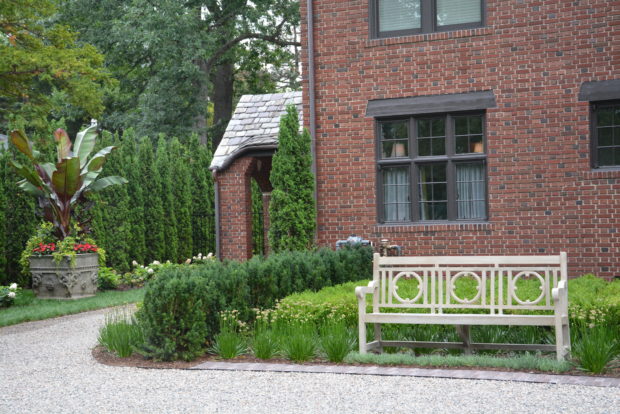 The landscape near the house is largely handled by big blocks of boxwood, and an outside frame of Nova yews. The dwarf and feathery Allium senescens is planted on the front edge of a pair of gorgeous classically styled concrete benches, while blocks of allium Millenium frame them on either side. Allium Millenium is a carefree perennial with gorgeous foliage all season long that deserves a spot in any perennial garden. The massive planter in the side yard is planted with an equally massive banana. That banana is all the more striking, in textural contrast to the hedge of DeGroot Spire arborvitae planted behind it on the north side lot line.
The landscape near the house is largely handled by big blocks of boxwood, and an outside frame of Nova yews. The dwarf and feathery Allium senescens is planted on the front edge of a pair of gorgeous classically styled concrete benches, while blocks of allium Millenium frame them on either side. Allium Millenium is a carefree perennial with gorgeous foliage all season long that deserves a spot in any perennial garden. The massive planter in the side yard is planted with an equally massive banana. That banana is all the more striking, in textural contrast to the hedge of DeGroot Spire arborvitae planted behind it on the north side lot line.
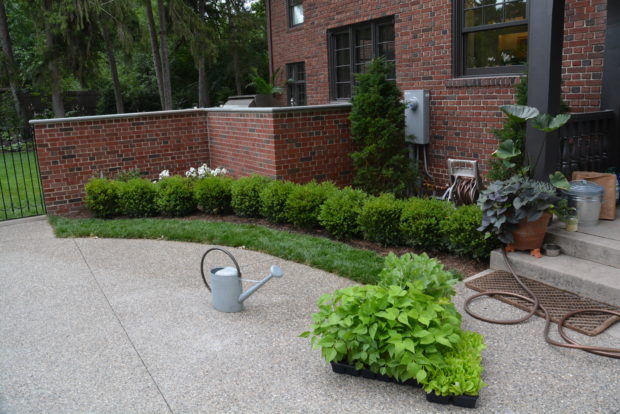 The gravel driveway that goes under the port cochere to the garage switches to concrete aggregate, in the back of the house. Going in and out of a garage, and the walk from the garage to the house asks for a material that can withstand lots of backing up, and moving forward, traffic, and snow removal. Concrete aggregate is a favorite material used in concert with contemporary homes, but it is equally friendly with homes of great age. It has the look of gravel, with the serviceability of concrete.
The gravel driveway that goes under the port cochere to the garage switches to concrete aggregate, in the back of the house. Going in and out of a garage, and the walk from the garage to the house asks for a material that can withstand lots of backing up, and moving forward, traffic, and snow removal. Concrete aggregate is a favorite material used in concert with contemporary homes, but it is equally friendly with homes of great age. It has the look of gravel, with the serviceability of concrete.
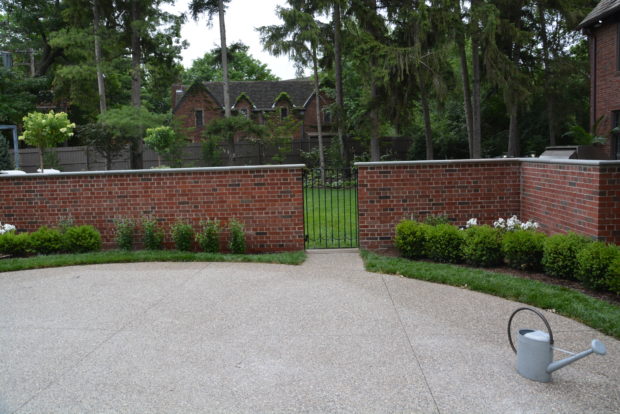 A new brick wall separates the garage, and the coming and goings of several vehicles, from the back yard. Any landscape design needs to address the need, while treasuring the look. This is not always so easy. It is important that the landscape be just as functional as it is beautiful. The back yard is screened from the garage and pavement by a substantial brick wall. That brick wall was original to the house, and in great disrepair when my clients signed their purchase agreement. Given that the wall would have to be rebuilt, we changed its contours to fit the new landscape.
A new brick wall separates the garage, and the coming and goings of several vehicles, from the back yard. Any landscape design needs to address the need, while treasuring the look. This is not always so easy. It is important that the landscape be just as functional as it is beautiful. The back yard is screened from the garage and pavement by a substantial brick wall. That brick wall was original to the house, and in great disrepair when my clients signed their purchase agreement. Given that the wall would have to be rebuilt, we changed its contours to fit the new landscape.
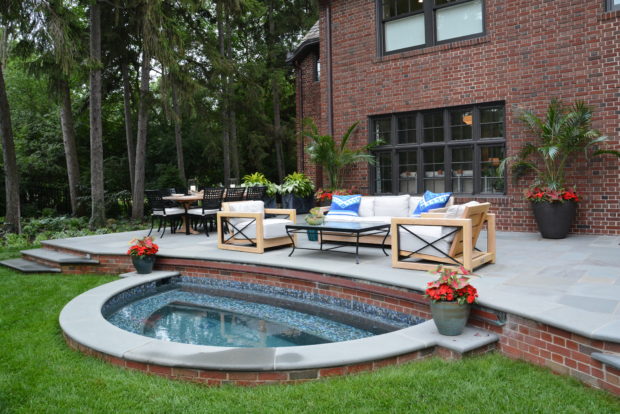 My client was about to install a small rectangular terrace off the back of the house. I asked that they consider another idea. I suggested that they go big and wide with the rear terrace-a substantial terrace that would not only include the entrance and exit from the kitchen, but also a way to access the screened porch. I am happy that they went wide. A generous gesture in the landscape always gets noticed, and appreciated.
My client was about to install a small rectangular terrace off the back of the house. I asked that they consider another idea. I suggested that they go big and wide with the rear terrace-a substantial terrace that would not only include the entrance and exit from the kitchen, but also a way to access the screened porch. I am happy that they went wide. A generous gesture in the landscape always gets noticed, and appreciated.
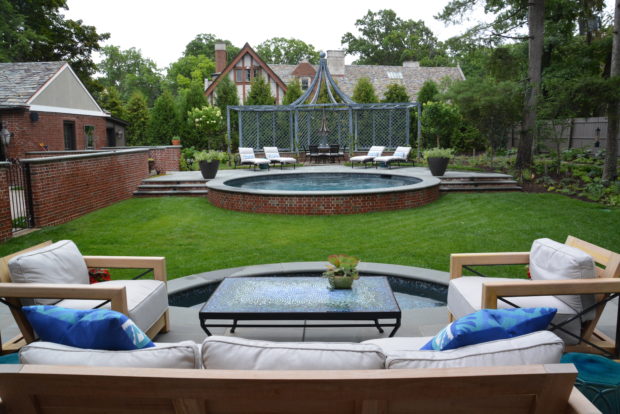 This is the first round swimming pool I have ever designed. It seemed right for the space. At 20 feet in diameter, it would not overly dominate the landscape. The ground rose naturally from the house to the rear lot line. The yard is formally terraced into two levels by the pool, and stairs on either side. The garden behind the pergola sweeps around to the right, and falls naturally on a gentle slope to the grade set by the house. This past year was all about the design and fabrication of the wall, pool, pergola, spa, and the house and pool terraces. Late last fall, a hedge of American arborvitae were planted on the rear lot line. Buck and his group at Branch fabricated the pergola you see in the distance.
This is the first round swimming pool I have ever designed. It seemed right for the space. At 20 feet in diameter, it would not overly dominate the landscape. The ground rose naturally from the house to the rear lot line. The yard is formally terraced into two levels by the pool, and stairs on either side. The garden behind the pergola sweeps around to the right, and falls naturally on a gentle slope to the grade set by the house. This past year was all about the design and fabrication of the wall, pool, pergola, spa, and the house and pool terraces. Late last fall, a hedge of American arborvitae were planted on the rear lot line. Buck and his group at Branch fabricated the pergola you see in the distance.
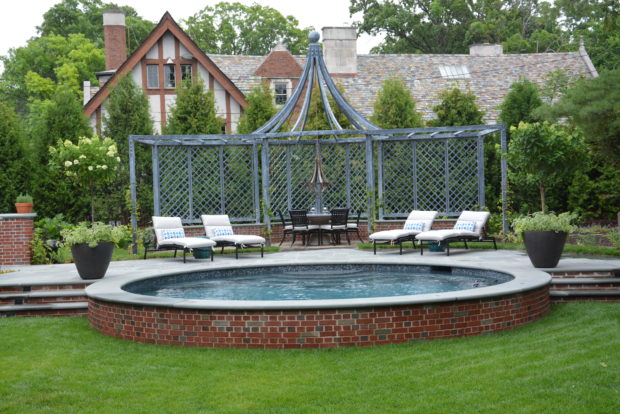 The rear of the pool deck is spacious enough for lounges. The circular center area under the roof is large enough for a table and chairs. The floor of the pergola is gravel. This made it easy to plant clematis on the front poles, and grapes at the back. The lattice panels on the pergola provide another layer of privacy. My client chose the location for the pair of pots planted with hydrangeas on standard. Next year, the hydrangeas planted in front of the arborvitae, and behind the pergola will make a strong visual relationship to the hydrangeas in pots. We will plant them in the ground for the winter season.
The rear of the pool deck is spacious enough for lounges. The circular center area under the roof is large enough for a table and chairs. The floor of the pergola is gravel. This made it easy to plant clematis on the front poles, and grapes at the back. The lattice panels on the pergola provide another layer of privacy. My client chose the location for the pair of pots planted with hydrangeas on standard. Next year, the hydrangeas planted in front of the arborvitae, and behind the pergola will make a strong visual relationship to the hydrangeas in pots. We will plant them in the ground for the winter season.
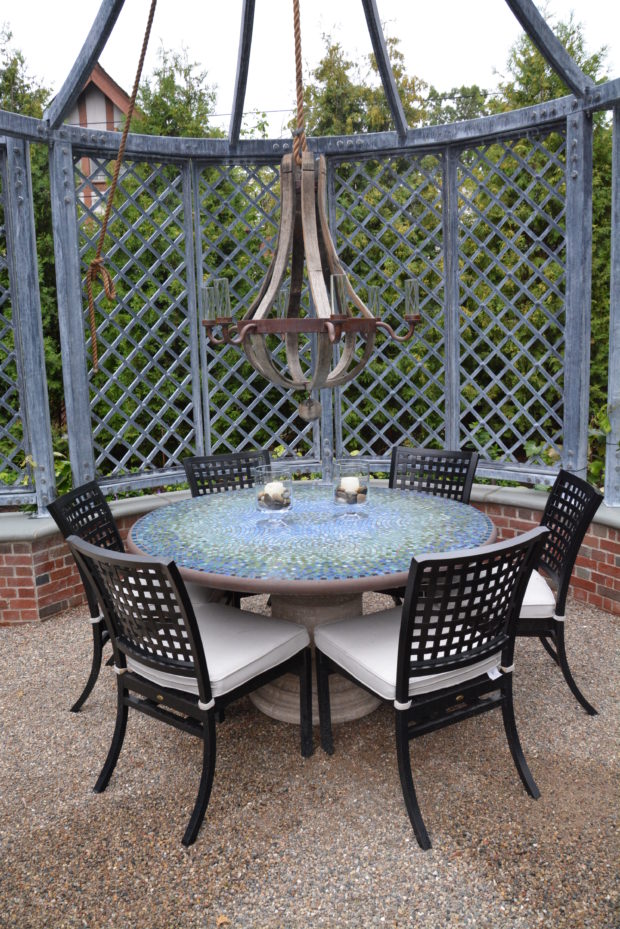 All of the furniture was chosen by my clients, as was the chandelier.
All of the furniture was chosen by my clients, as was the chandelier.
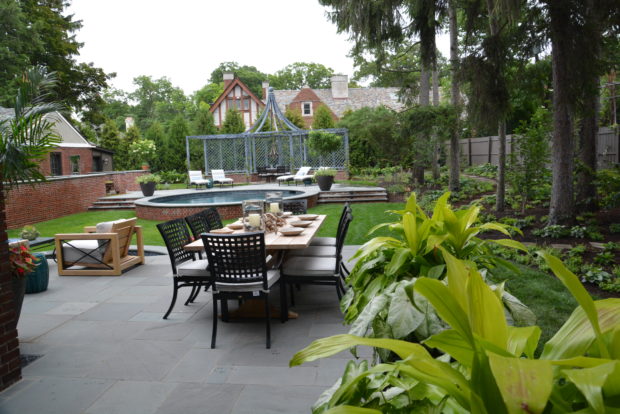 the view from the screened porch door
the view from the screened porch door
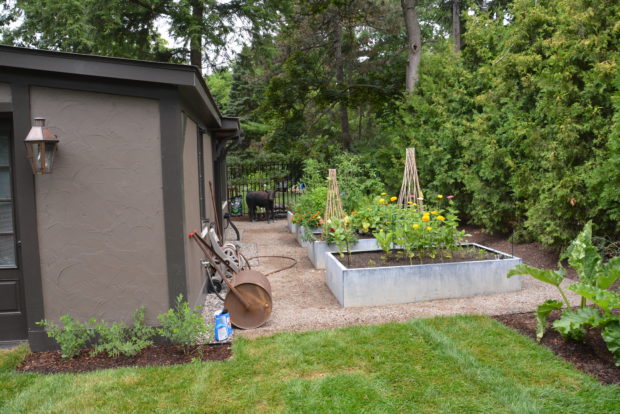 raised planters for vegetables and herbs
raised planters for vegetables and herbs
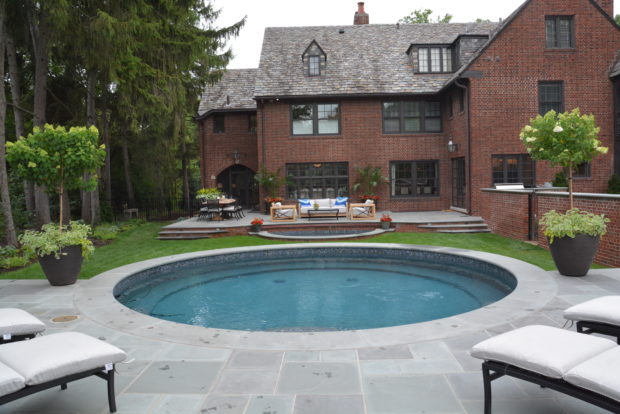 the view from the pool terrace to the house
the view from the pool terrace to the house
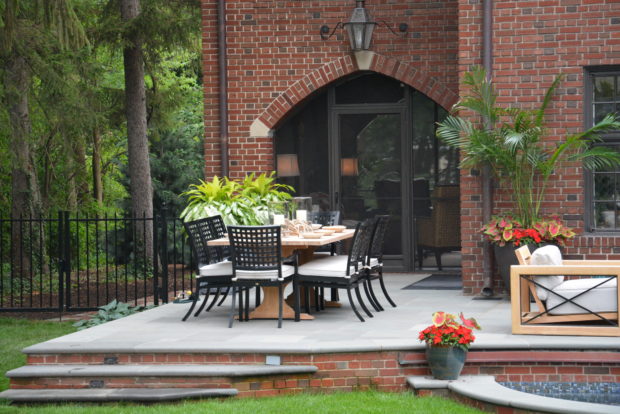 dining table and chairs outside the screened porch
dining table and chairs outside the screened porch
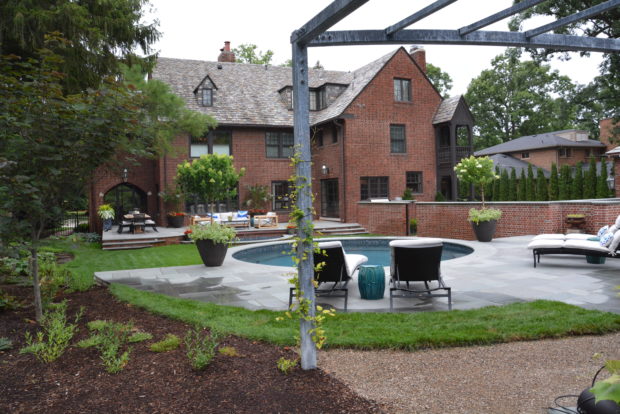 sweet autumn clematis on the pergola
sweet autumn clematis on the pergola
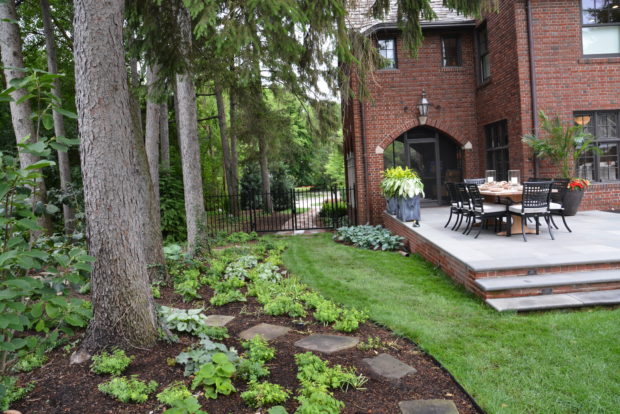 The view from shade garden towards the front yard
The view from shade garden towards the front yard
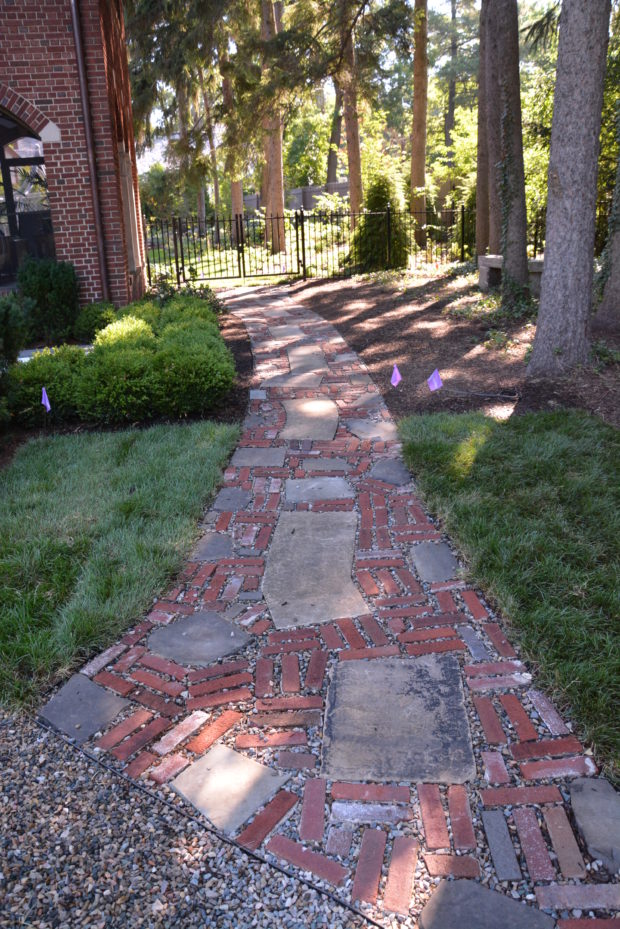 This could be my favorite feature of the landscape. The stone contractor created this walkway to the back yard from limestone and brick original to the house. I call it the history walk. Every time I see it, I am reminded of how much my clients did to restore and preserve this historic building, and add themselves to that mix.
This could be my favorite feature of the landscape. The stone contractor created this walkway to the back yard from limestone and brick original to the house. I call it the history walk. Every time I see it, I am reminded of how much my clients did to restore and preserve this historic building, and add themselves to that mix.
